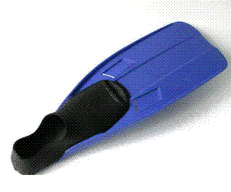| Styrenic block copolymers tps (tpe-s) |
| 
|
| Styrene-ethylene-butylene-styrene
|
|
|
|
In Mexpolimeros we offer a wide range compound of SBS and developed according to their needs, ensuring quality products and service. Our product range includes grades block copolymer SEBS and SEPS are available from 3 ÷ 70 Shore A to 70 ShoreD. XPRENE EB has been specifically formulated for molding or two shots (2K) and develops a chemical bond when molded by injection molding a variety of plastic substrates . XPRENE EB is divided into a wide range of products such as soft touch, expandable, high temperature resistant, low compression set, halogen FR and many other specialty categories. EB XPRENE thermoplastic elastomers are freely configurable flow. The EB XPRENE class consists of products that can replace natural rubber TPV (thermoplastic vulcanizate).
|
| 
|
| What is SEBS
|
|
|
|
SEBS possess the mechanical properties of rubbers, and the processing characteristics of thermoplasts. This is related to their molecular structure.One of the most used thermoplastic rubbers in injection moulding is styrene‐ethylene/butylene‐styrene, SEBS. Styrene‐ethylene/butylene‐styrene is a block copolymer in which ethylene/butylene‐ block separates two styrene‐blocks. Polymers derived from styrene-butadiene are synthetic rubbers that have virtually completely replaced the natural. SEBS is a hydrogenated thermoplastic styrenic elastomer with excellent weatherability and heat resistance that is produced by hydrogenation of styrene and butadiene block copolymers. SEBS-based compounds has excellent elastomeric properties and a rubberlike appearance, designed for injection moulding and co-moulding onto polyolefines. They have excellent U.V. stability and are also suitable for extrusion applications. There are many varients from pure transparent high elasticity grades to filled gasket grades.
|
|

|
| Name - Symbol
| Chemical Formula |
|
|
|
- SEBS
- TPE-S
- HSBC
- Styrene-ethylene-butylene-styrene
- Styrene ethylene butylene styrene
- TR
- ISO 18064: TPS
| |
| SEBS polymer properties
|
|
|
|
|
- Thermoplastic elastomers with the high elasticity and strength comparable to vulcanized rubber
- Excellent weatherability and resistance to heat aging
- Rubber elasticity retention over broad temperature range
- Excellent flex resistance
- Excellent chemical (acid, alkali, and alcohol) resistance
- Low density - 0.89 to 0.97 g/cm3
- Excellent compatibility with styrenic and olefinic resins, imparting high impact strength
- High tensile strength and modulus
- Good miscibility
- Good wear resistance
- Good electrical properties
- High coefficien of friction
| | 
|
| SEBS Mechanical and physical properties
|
|
|
|
The SEBS rubbers offer excellent impact resistance and low-temperature flexibility, are highly resistant to oxidation and ozone, and do not require vulcanization. Their degree of flexibility is a function of hardness, with their Shore A hardness ranging from 37 to 95. The SEBS rubbers and compounds exhibit excellent resistance to ozone. For prolonged outdoor exposure the addition of an ultraviolet absorber or carbon black pigment or both is recommended.
|
| 
|
| SEBS Thermal properties
|
|
|
|
These rubbers are serviceable from −75 to 105°C. They have excellent resistance to very low-temperature impact and bending. Their thermal life and aging properties are excellent, as is their abrasion resistance. Although the SEBS rubbers have poor flame resistance, compounding can improve their flame retardancy. This compounding reduces the operating temperature slightly.
|
| 
|
| SEBS Electrical properties
|
|
|
| SEBS are typically good insulators with high relative electrical resistivity being nonpolar polar best. However, the electrical properties of the compounds of XPRENE EB are more dependent on the ingredients used in the formulation of the elastomer base. Our compunding of SEBS can be conductive antistatic by the incorporation of sufficient amounts of graphite, special types of carbon black, certain metal powders or polar products in the rubber mixture. However, the conductivity obtained by these means does not resemble that of metals.
|
| 
|
| SEBS Chemical properties
|
|
|
|
The chemical resistance of the SEBS rubbers is similar to that of natural rubber. However, some degradation in the compounds can be seen at long-term exposure to organic solvents, oils as well as fuels. Therefore tests should be carried out to determine the suitability of TPE in each application that requires chemical resistance. We recommend the tests to be performed under actual service conditions, as the resistance and absorption are highly dependent on the service temperature and other conditions of the end application.
These products have very good resistance to hydrolysis and to most dilute acids and alkalis. With some concentrated acids, it is necessary to compound the materials without fillers, since CaCO3 (Calcium Carbonate) reacts with acid. Resistance to many vegetable fats (unsaturated) is moderate, while resistance to animal fats (saturated) tends to be poor. Resistanceto lubricating oil, gasoline and other fuel and many solvents is also poor. Resistance to alcohol and glycol is good. Filled grades have moderately good and unfilled products somewhat better abrasion values. |
| 
|
| SEBS Processability |
|
|
|
SEBS can be injection moulded. Nozzles of injection moulding machine and mould have to be round and spacious because after the pressure should have enough time for interacting with the moulded part. If there are many cavities in the mould, channels should be well balanced. The gate of mould’s nozzle has to be at least half of part’s wall thickness and the minimum gate size 0.7 mm. Because SEBS is an elastic material, it is possible to use large undercuts. The amount of undercut depends heavily on hardness of used SEBS trade. Usually it is necessary to use ejection plate on ejection before opening the mould because soft mass does not usually endure ejector pins. Mould shrinkage depends for SEBS grade and fluctuates between 0.5 ‐ 3.5 %. This has to be taken into account when designing the mould cavity and ejection. Gas removal channels’ depth should be from 0.02 to 0.05 mm depending also on SEBS grade. Unsatisfactory gas removal leads to weak weld lines. Mould temperature should be relatively low (+ 40 °C). Mass temperature should befrom 170 to 220 °C.
| | 
|
| SEBS Compound |
|
|
|
It is produced by highly selective partial-hydrogenation of the SBS polymer, resulting in higher heat resistance than SBS elastomers and greater processability and low-temperature properties than fully hydrogenated SEBS elastomers, in addition to the inherent polymer characteristics and properties. By using stabilizers, to obtain higher UV resistance and aging behaviour as required in automotive interior and exterior applications.
|
|

|
| SEBS Applications |
|
|
|
The SEBS rubbers find applications for a wide variety of general-purpose rubber items as well as in automotive, sporting goods, and other products. Many applications are found in theelectrical industry for such items as flexible cords, welding and booster cables, flame-resistant appliance wiring materials, and automotive primary wire insulation, car interiors, home furnishings, domestic electrical appliances, flippers & other diving equipment, ski-boots, skating shoes, gaskets, parts for tools, handles, door handles etc. Food grades and medical: tops for containers and bottles, and toys.
|
| 
|
|
|
|
|
|